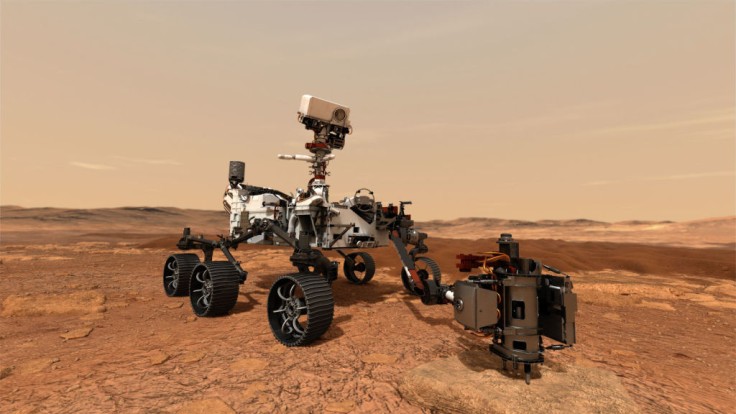
NASA's Perseverance Rover has once again found a surprising discovery.
Volcanic Rocks Found in Mars
Space.com reported that according to a thorough investigation published in the journal of Science under the title "Aqueously altered igneous rocks sampled on the floor of Jezero crater, Mars," NASA's Perseverance Rover made a startling discovery of volcanic, or "igneous," rocks
Perseverance's first year on Mars was thoroughly studied by scientists, who were surprised about the discovery of volcanic rocks.
How Important Are These Rocks in Studying the Red Planet
According to the analysis, the Perseverance Rover should land on sedimentary rocks that were created from mud and other debris left behind by the vast lake that once filled the Jezero crater, around 3.7 billion years ago.
Although there are many different kinds of rocks on Mars, these specific ones are not ordinary rocks. In fact, as per the research, these rocks discovered on the floor of the Jezero Crater might hold the key to unlocking Mars' climate history. This could also show precisely when it was wet and possibly livable.
Jezero Crater's climate may have been favorable for life billions of years ago, according to planetary scientists and astrobiologists.
And this discovery might hint us something.
What Is the Composition of the Rocks Found in Jezero Crater
Space.com mentioned that "some of the rocks found in Jezero Crater have a similar composition to rocks from Earth's deep subsurface," the publication noted, "where the oxidation of iron through interactions with water can produce molecular hydrogen and hydrocarbons such as methane that can act as the building blocks of some of life's more complex compounds."
According to Ken Farley, professor of geochemistry at California Institute of Technology (Caltech), project scientist on the mission, and lead author of the new research, the origin of Jezero's igneous rocks is still unknown because there are no visible volcanic structures inside or close to the crater.
Two Rock Formations That Perseverance Rover Study

Perseverance has been researching the Sétah and Máaz igneous rock formations.
Olivine, a common volcanic mineral composed of magnesium-iron silicate, is abundant in Sétah.
Máaz, meanwhile, is thought to have developed from lava that flowed over Sétah.
This Unbelievable Image Was Captured by Perseverance Rover as Well
The Perseverance Rover has landed on Mars and has found other unusual and fascinating terrain.
On June 12, the NASA Perseverance Rover's mast-mounted camera captured this expansive image of the Martian rock.
What a world!
— David Grinspoon (@DrFunkySpoon) June 14, 2022
Taken yesterday by Perseverance, this is perhaps the most evocative photo ever taken on Mars. I can’t stop staring at it and marveling at this landscape. pic.twitter.com/LwH1agZWgl
If you notice, there is a rock on the top of a slab of rock on the left side of the photo.
But there are other interesting aspects of the picture as well.
Take a look on the right side of the picture and you will find a rock that resembles a snake with its jaws open.
It is still unknown how the rock that is perched atop the slab got there.
Perseverance's two primary objectives are to [1] uncover evidence of past Mars life (presuming it exists) and [2] gather and store a large number of samples for future return to Earth.
Related Article : NASA Shares Perseverance Rover Photo of the Martian Landscape









